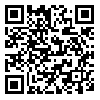Volume 8, Issue 1 (spring 2004)
jwss 2004, 8(1): 205-212 |
Back to browse issues page
Download citation:
BibTeX | RIS | EndNote | Medlars | ProCite | Reference Manager | RefWorks
Send citation to:



BibTeX | RIS | EndNote | Medlars | ProCite | Reference Manager | RefWorks
Send citation to:
A. H. Jamali-Zavareh A. Sharifi-Tehrani, M. Izadyar, E. Taheri. Detection of Pyroquilon in Rice Plants after Soil Treatment and its Relation to Rice Blast Control. jwss 2004; 8 (1) :205-212
URL: http://jstnar.iut.ac.ir/article-1-416-en.html
URL: http://jstnar.iut.ac.ir/article-1-416-en.html
Abstract: (20881 Views)
Systemic properties of pyroquilon, an anti-blast systemic chemical, used in controlling rice blast disease caused by Pyricularica grisea, was investigated through in vivo tests. Rice plants were treated with pyroquilon as granules in soil. Leaf and stem tissues were collected at different times after treatment and pyroquilon was extracted from tissues and detected by gas chromatography. Treated rice plants were also exposed to disease infection in blast nursery at different times and disease incidence was evaluated one week later. Pyroquilon was detected in leaf tissue one day after treatment (DAT), reached maximum during 4-7 DAT, and then reduced gradually to a nondetectable level after 28 DAT. In stem tissue, change in pyroquilon content was similar to but its quantity was less than that of leaf tissue. On inoculated plants, disease was controlled up to 60% at 2 DAT and completely controlled during 4-28 DAT. The results indicated that pyroquilon could be taken up and systemically translocated in rice plants after applying as granules in soil. Extent of disease control was a good function of pyroquilon content in leaf tissue (R2=0.93) and 2 ppm of compound in leaf could provide 90% control of the disease. In contrast, disease control was not a good function of pyroquilon content in stem tissue (R2=0.30).
| Rights and permissions | |
 | This work is licensed under a Creative Commons Attribution-NonCommercial 4.0 International License. |






